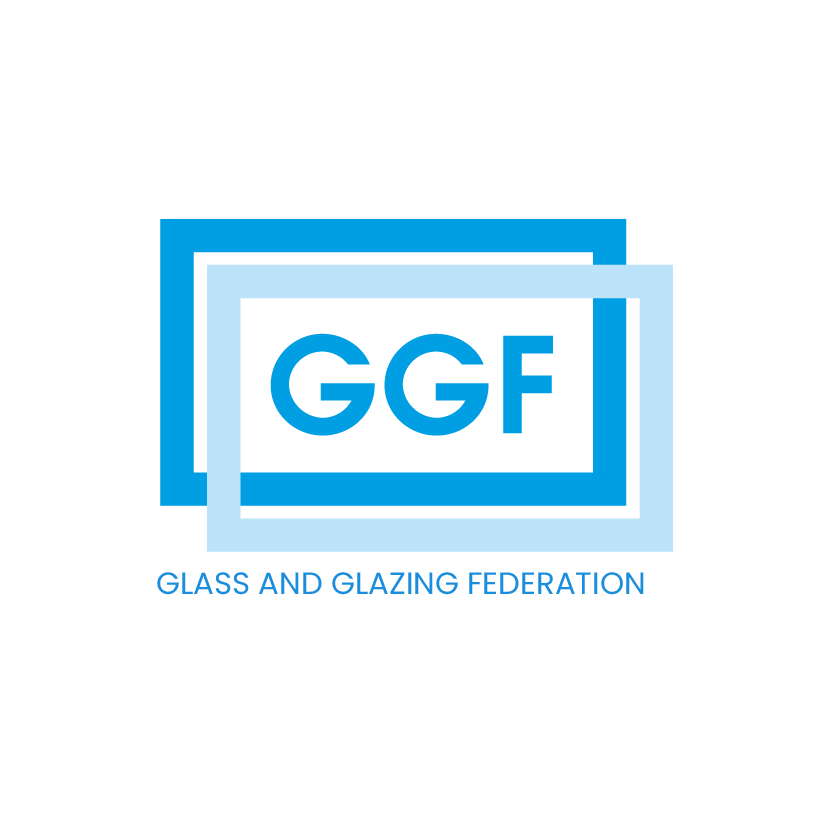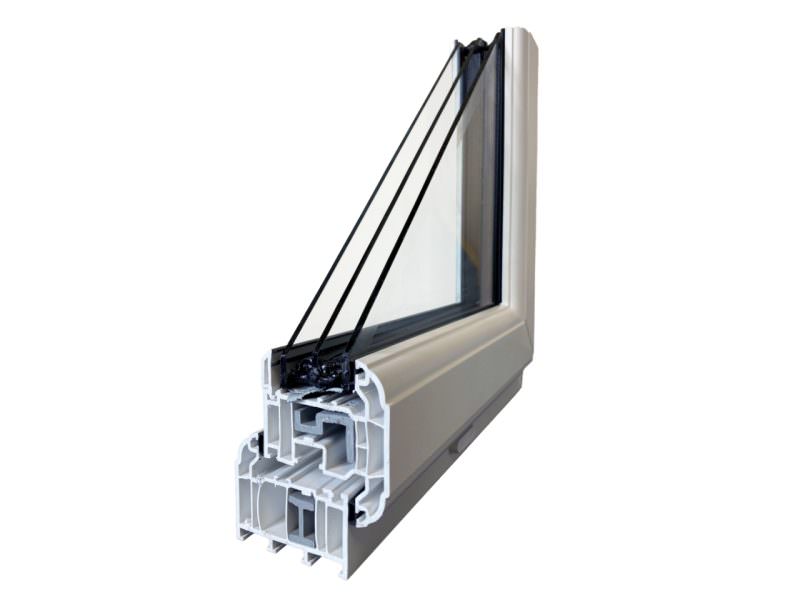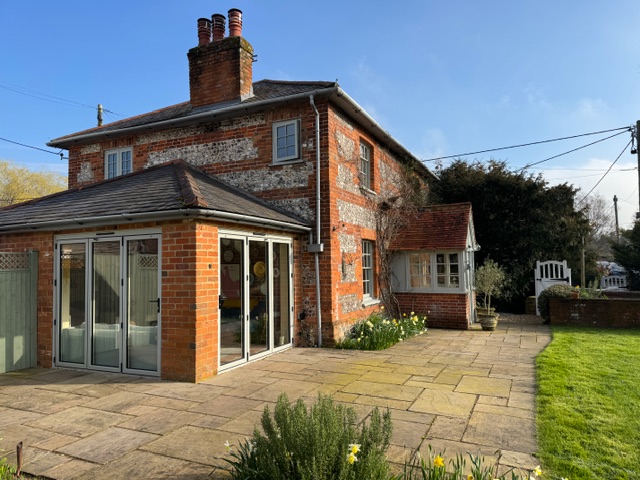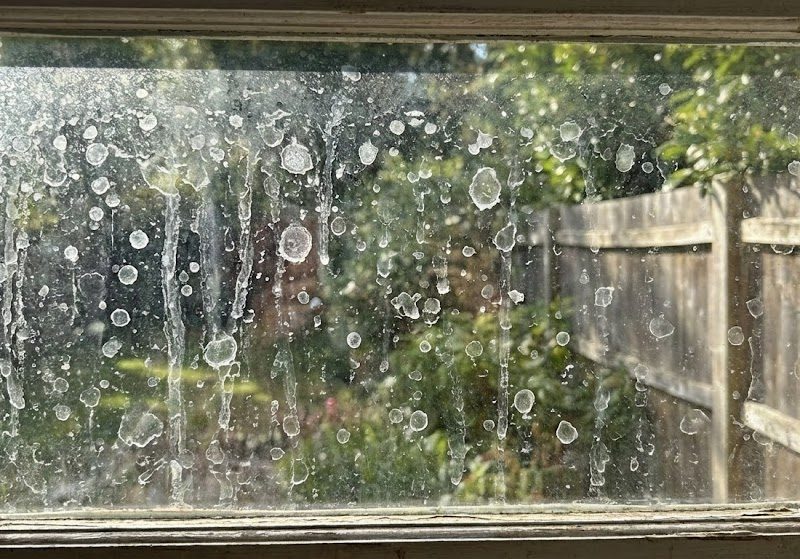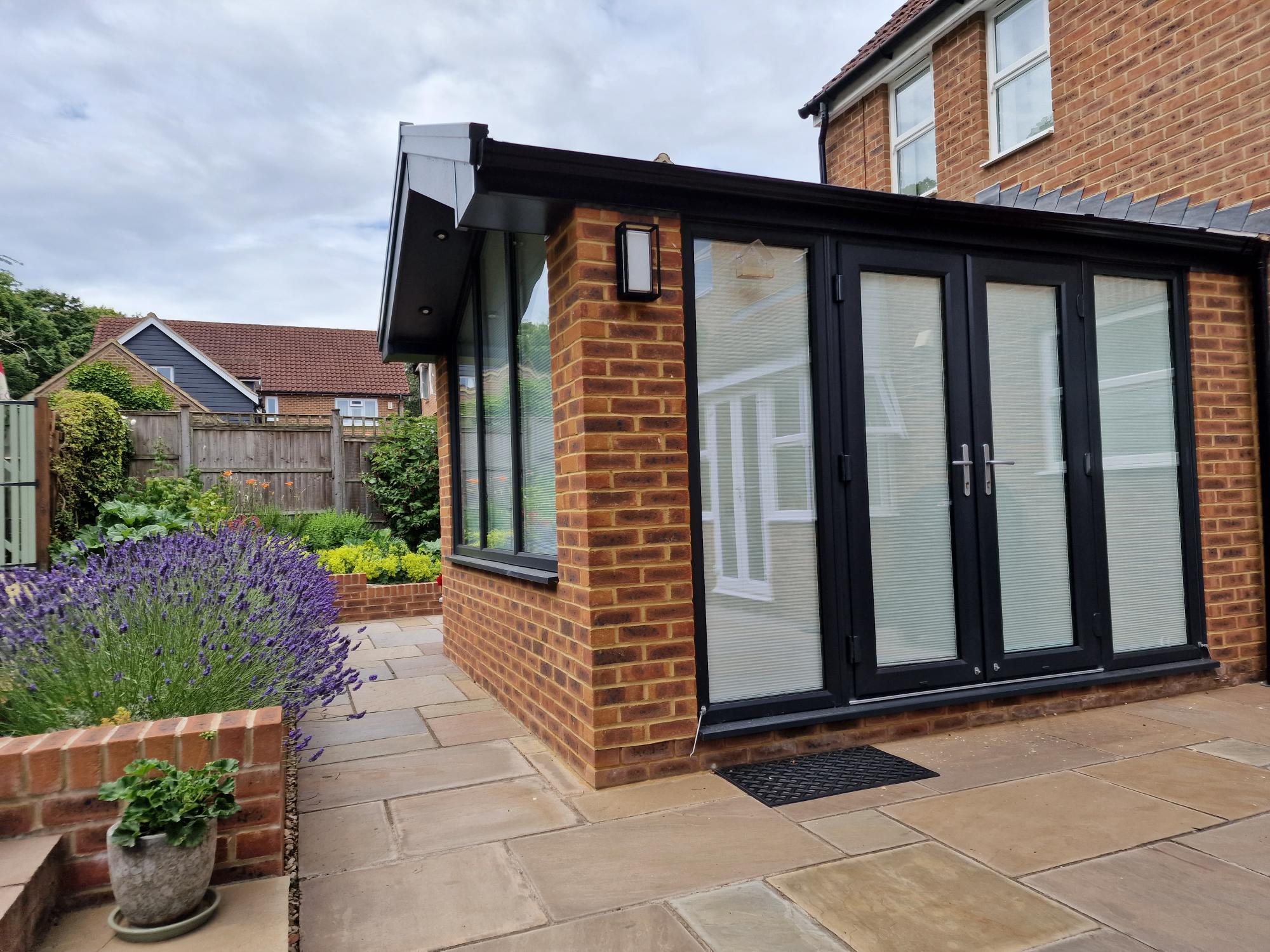
Timber - PVC - Aluminium - Windows, Doors & Conservatories in Hampshire
Refurbish or Rebuild? The Ultimate Decision Guide for Old Conservatories
Refurbish or Rebuild? The Ultimate Decision Guide for Old Conservatories
📌 The 2025 Decision: Save it or Scrap it?
- The Structural Rule: If the brick base and foundations are sound, refurbishment (new roof/frames) is typically 50% cheaper than a full rebuild.
- The Thermal Fix: Replacing a polycarbonate roof with a solid or hybrid tiled system changes the U-value from ~2.4 to ~0.15 instantly.
- The Outcome: Both options turn dead space into a functional reception room, significantly boosting property value.
Do you have a conservatory that you only use for storage? Or perhaps a room that is famously “too hot in summer and too cold in winter”?
You are not alone. Thousands of conservatories built in the 1990s and early 2000s are reaching the end of their useful life. The big question facing homeowners in Hampshire is: Should I knock it down and build an extension, or can I refurbish what I have?
Table of Contents
1. The “Big Table”: Refurbish vs. Rebuild
Before you commit to a decision, it is vital to understand the difference in cost, time, and disruption. In many cases, a comprehensive refurbishment offers the “extension feel” without the “extension price,” though paperwork is often required for both.
| Factor | Full Refurbishment | Demolish & Rebuild (Extension) |
|---|---|---|
| Estimated Cost | ££ (Cost Effective) | £££££ (High Investment) |
| Duration of project | 4 – 5 Weeks | 6 – 12 Weeks |
| Mess/Disruption | Minimal (Base/floor stays in place) | High (Digging new foundations) |
| Planning & Approvals | Usually Required (Building Regs) | Required (Building Regs/Planning) |
| Thermal Efficiency | High (0.15 U-value roof) | Very High (Full brick insulation) |
2. The Structural Health Check
Not every conservatory should be saved. Before you fall in love with the idea of a refurbishment, you need to ensure your existing structure is up to the task. A solid tiled roof is often heavier than polycarbonate, so the load-bearing capacity matters.
📋 Is your conservatory suitable for a new roof?
- The Brickwork: Are there visible cracks in the dwarf walls? Does the brickwork look subsided or uneven? If the base is failing, refurbishment is a waste of money.
- The Frames: Are your current window frames steel-reinforced? To carry a solid roof, the frames must be structurally sound and reinforced. If they are old, flimsy uPVC, they may need replacing along with the roof.
- The Depth: Is the room deep enough to be useful? If the conservatory is too small (under 2.5m deep), spending thousands on a roof might not add enough value. Extending might be the better long-term choice.
3. The “Big Win”: Roof Replacement
The roof is responsible for the majority of heat loss in winter and heat gain in summer. Old polycarbonate roofs offer almost zero insulation (and are incredibly noisy in the rain). Replacing this is the single most impactful change you can make.
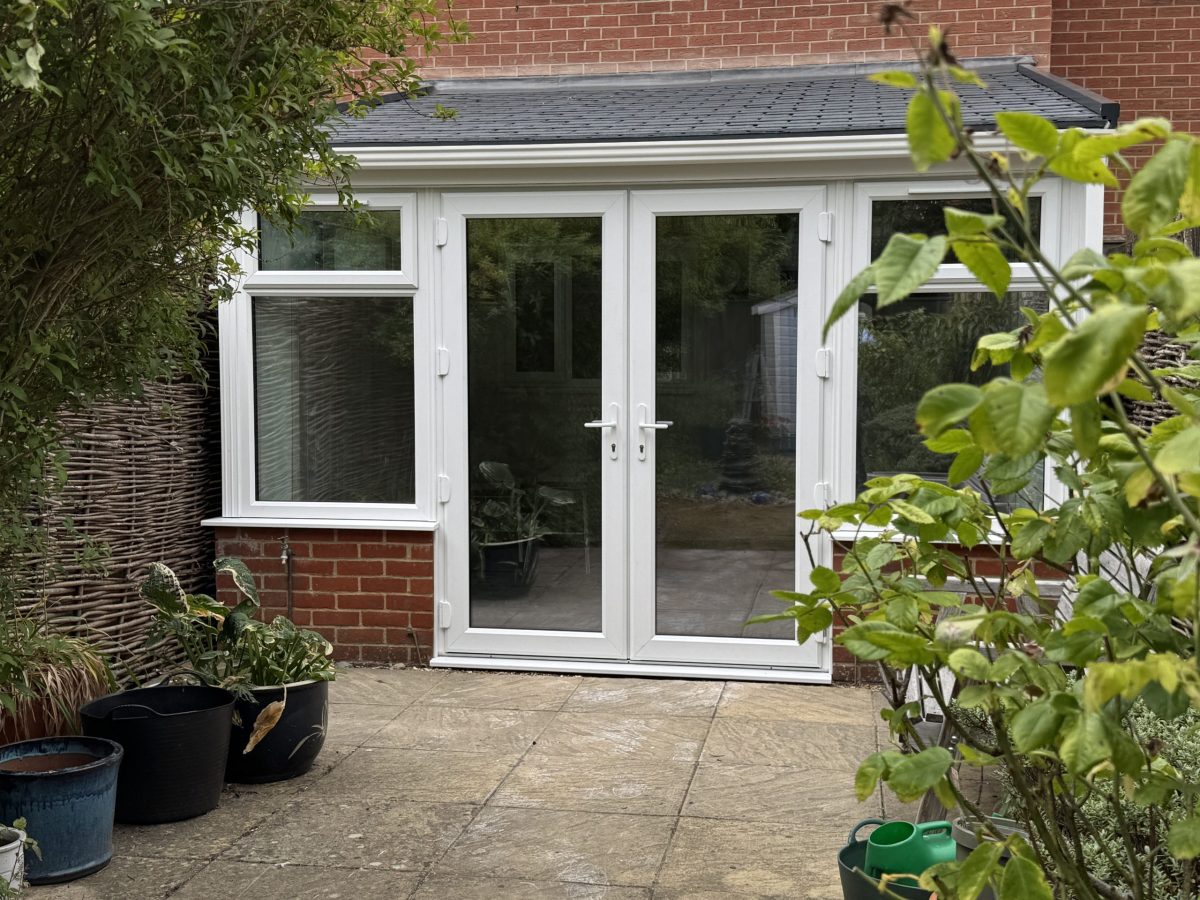
Option A: Solid Tiled Roof
This effectively turns your conservatory into an extension. The roof is lightweight (so it can usually sit on existing frames) but highly insulated. It offers the best thermal performance and creates a vaulted ceiling inside.
Option B: Solar Control Glass
If you want to keep the light, upgrade to modern high-performance glass. Products like Pilkington Activ™ Blue reflect heat back out in summer while keeping warmth in during winter. It is a huge step up from old glass or polycarbonate.
Option C: Hybrid Roof (Tiles + Glass)
Can’t decide between the solid feel of an extension and the natural light of a conservatory? A hybrid roof (like the Livinroof) offers the best of both worlds. It uses solid insulated panels for warmth but allows you to insert shaped glass panels exactly where you want them—perhaps over a dining table or reading nook—to flood the room with light without the glare.
4. ⚠️ WARNING: The “Clad Over” Trap
When researching roof replacements, you may see adverts for cheap “clad over” or “clad under” systems. These involve screwing timber batons, insulation, and PVC cladding directly onto your existing glass or polycarbonate roof bars.
⛔ Why you should avoid “Clad Over” roofs
While cheaper, these systems can be disastrous for your property. Here is why KJM Group will never install them:
- Structural Failure Risk: Your existing roof was designed to carry light plastic or glass. Adding timber, insulation, and plasterboard adds immense weight. In heavy snow, the roof can collapse.
- The “Greenhouse Effect”: Trapping heat between the old glass and new insulation creates condensation. This rots the structure from the inside out, often invisibly.
- Fire Safety: Many of these systems have not been fire-tested as a complete unit.
- Resale Value: Surveyors are increasingly flagging these roofs as “defective.” We have seen many homeowners forced to pay to remove a clad-over roof before they can sell their house.
The Golden Rule: A proper roof replacement involves removing the old roof entirely, not covering it up.
5. Changing the Frames & Glazing
If your old white uPVC frames are yellowing, or the styling looks dated (like Victorian “fussy” crestings), a full frame replacement can modernise the home. This isn’t just an aesthetic upgrade; it opens the door to serious performance improvements.
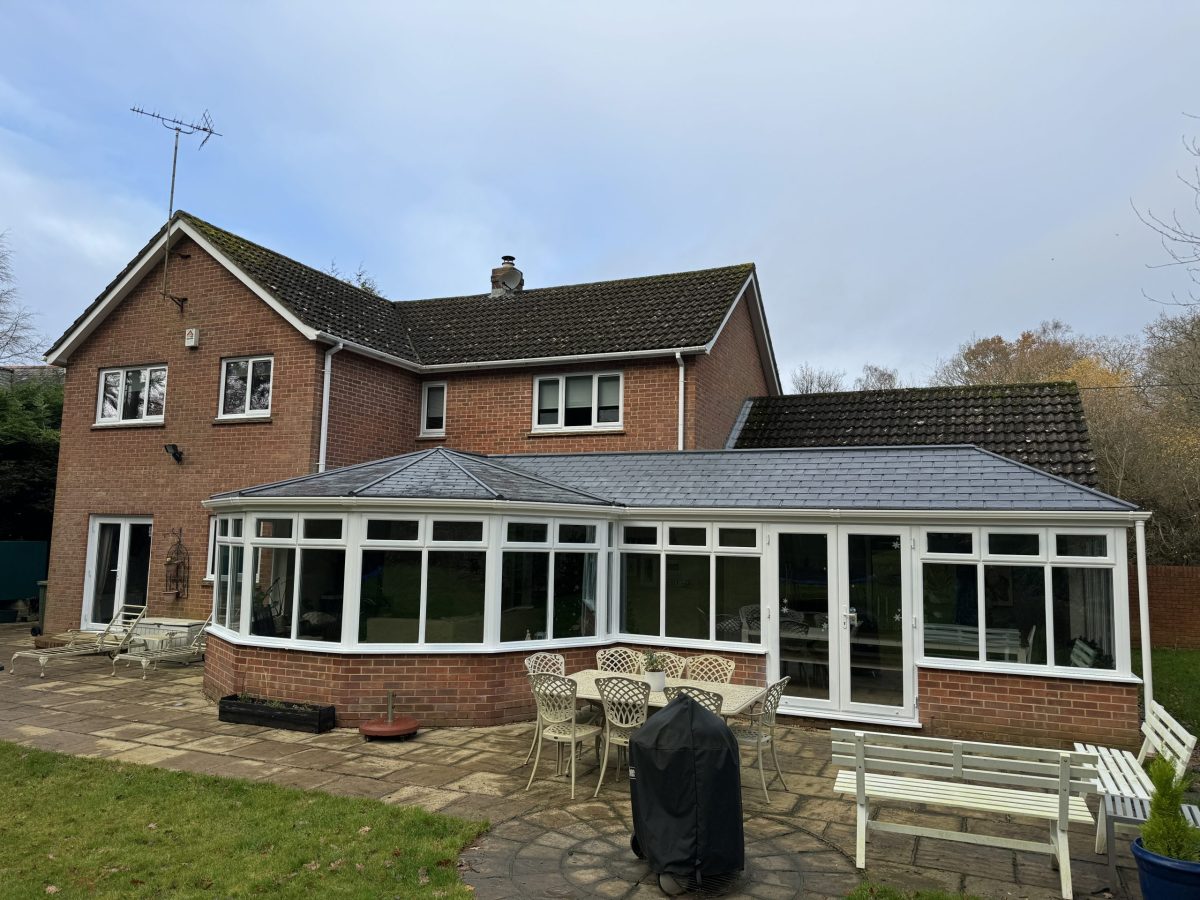
The Triple Glazing Advantage
One significant benefit of replacing the frames is the ability to upgrade to Triple Glazing. Older frames were often too narrow to accept thicker glass units. Modern profiles are designed to hold 40mm or 44mm triple-glazed units.
This extra pane of glass (and the additional Argon gas cavity) provides superior U-values and significantly reduces noise pollution—perfect if your conservatory faces a road or you want a whisper-quiet home office.
The “Heritage” Transformation
Standard white uPVC can often make a conservatory look like a “bolt-on” addition. For a true transformation, consider replacing standard casements with Heritage Flush Sash Windows.
These systems, such as the Residence 9 collection, replicate 19th-century timber joinery. They sit flush against the frame rather than protruding out, instantly upgrading a standard conservatory into a grand Orangery-style garden room.
6. Creating the “Orangery” Feel (Internals)
Refurbishment isn’t just about the outside. To truly transform a conservatory into a reception room, you need to change how it feels inside.
Internal Pelmets: Many solid roof systems allow for an internal plastered “pelmet” around the perimeter. This mimics the look of a substantial Orangery and gives you the perfect housing for downlights or speakers.
Plastered Walls: If you have exposed brickwork on the house wall or dwarf walls, consider plastering over it. Smooth, painted walls instantly make the space feel like a lounge rather than a “garden room.”
Heating & Flooring: Old conservatories often lack proper heating. Since you are upgrading the insulation, you can now install efficient electric radiators without the heat escaping immediately. Pair this with Engineered Wood Flooring for a timeless, warm finish, or a high-quality Carpet to create a truly cosy snug.
7. Can I Make it Open Plan?
One of the most requested upgrades is removing the doors between the house and the conservatory to create a large, open-plan kitchen or diner.
The Legal Side: To do this, the conservatory must technically become an “extension.” This means it must demonstrate high thermal efficiency to meet Building Regulations. By upgrading to a solid roof and A-rated windows (or Triple Glazing), KJM can often help you achieve the necessary standards to sign this off legally, adding significant value to your home.
📚 Related Guides
- Full Guide: The Complete Conservatory Refurbishment Guide
- Roof Systems: Ultraframe Replacement Roofs External
- Roof Options: Guide to Solid Roofs
- Door Styles: Bifold vs. Sliding Doors: Which is Best?
8. Frequently Asked Questions
Usually, yes. Whether you are rebuilding an extension or replacing a roof on an existing conservatory, some form of approval is typically required. For solid roof replacements, Building Regulations approval is mandatory to ensure the structure can take the weight and meets thermal standards. KJM handles all necessary applications for you.
In most cases, yes. Modern solid roof systems (like Warmer Roof) are designed to be extremely lightweight. However, a surveyor will always check the structural integrity of your existing frames and foundations before we begin.
Removing the doors creates an open plan layout, which is highly desirable. However, if done illegally without meeting Building Regulations, it can cause issues when selling. If done correctly, it can add value.
- The 2026 Glazing Outlook” – High-level summary of the pivot to growth. - 9 December 2025
- Industry News: The Future Homes Standard 2025 & What It Means for Your Windows - 1 December 2025
- KJM Group MD Attends House of Commons Event to Champion UK Glass Industry - 14 November 2025






